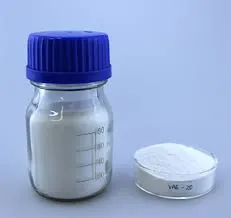
Abu . 10, 2024 16:55 Back to list
Exploring the Applications and Innovations of HPMC and CMC in Modern Industries
HPMC and CMC A Comprehensive Overview of Their Applications and Benefits
Hydroxypropyl Methylcellulose (HPMC) and Carboxymethyl Cellulose (CMC) are two prominent cellulose derivatives that have gained significant attention across various industries due to their unique properties and functionalities. Both compounds are widely used in pharmaceuticals, food, cosmetics, and construction industries, serving diverse purposes that exploit their thickening, binding, and stabilizing capabilities.
HPMC Properties and Applications
Hydroxypropyl Methylcellulose is a non-ionic cellulose ether that is soluble in cold water and forms a gel-like substance upon dissolution. One of HPMC’s most notable features is its ability to form films, making it an essential ingredient in coatings and controlled-release formulations. In pharmaceuticals, HPMC is often utilized in tablet formulations as a binder and a coating agent, improving the stability and release profile of active pharmaceutical ingredients (APIs).
In the food industry, HPMC acts as a thickening agent, emulsifier, and stabilizer. It is commonly found in various food products such as sauces, frozen desserts, and gluten-free baked goods, where it helps to enhance texture and improve mouthfeel. Additionally, HPMC is recognized for its role in improving the moisture retention of food products, contributing to longer shelf life.
.
CMC Properties and Applications
hpmc cmc

Carboxymethyl Cellulose, on the other hand, is an anionic cellulose derivative that is also soluble in water. CMC’s chemical structure allows it to interact with water molecules effectively, creating viscous solutions. This property makes CMC an invaluable component in many formulations requiring thickening and stabilization.
In the pharmaceutical realm, CMC is predominantly used as a binder and stabilizer in tablet formulations. Its ability to form gels makes it beneficial in creating sustained-release drugs, ensuring that medication is released gradually over time. Moreover, CMC’s non-toxic nature makes it a safe choice for various applications, particularly in formulations meant for oral consumption.
The food industry also heavily relies on CMC as a thickener, stabilizer, and emulsifier. It is commonly found in ice creams, sauces, and gluten-free products. CMC not only improves texture but also retains moisture, enhancing the overall quality of food products. Its unique properties allow manufacturers to create low-fat and reduced-calorie food items without compromising on texture or flavor.
In the cosmetic industry, CMC serves as a thickening agent in lotions, creams, and other personal care products. Its ability to provide a smooth, creamy consistency makes it a popular choice among formulators looking to enhance the user experience.
Conclusion
Both HPMC and CMC are versatile cellulose derivatives with a wide range of applications across various industries. Their unique qualities, such as thickening, binding, and stabilizing abilities, make them invaluable in pharmaceuticals, food, cosmetics, and construction. As industries continue to seek innovative solutions and improve product formulations, the demand for HPMC and CMC is likely to grow. Understanding the properties and applications of these compounds is essential for professionals involved in product development and formulation, ensuring they harness their full potential in creating high-quality products.
-
Versatile Hpmc Uses in Different Industries
NewsJun.19,2025
-
Redispersible Powder's Role in Enhancing Durability of Construction Products
NewsJun.19,2025
-
Hydroxyethyl Cellulose Applications Driving Green Industrial Processes
NewsJun.19,2025
-
Exploring Different Redispersible Polymer Powder
NewsJun.19,2025
-
Choosing the Right Mortar Bonding Agent
NewsJun.19,2025
-
Applications and Significance of China Hpmc in Modern Industries
NewsJun.19,2025







